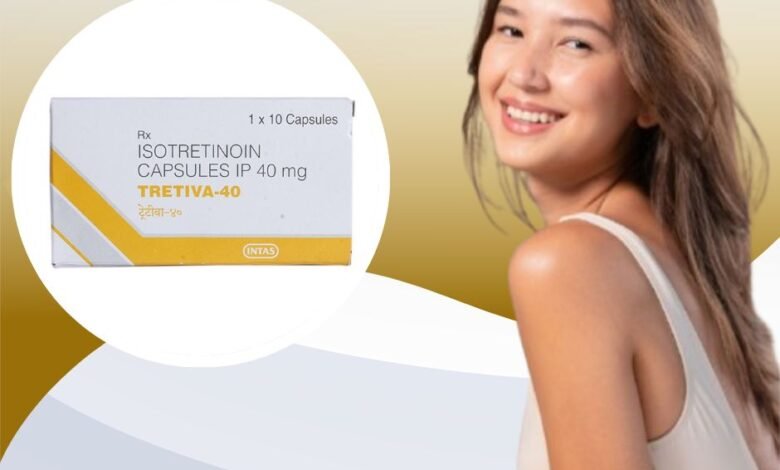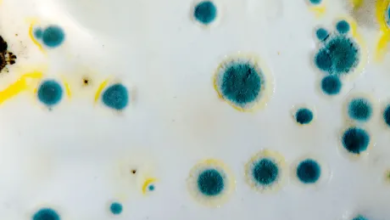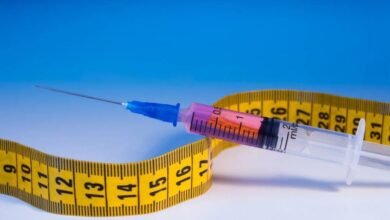
Acne, also known as pimples, is one of the most common skin conditions affecting people of all ages. While there are various treatments available for managing acne, Isotretinoin 40 mg, which contains isotretinoin, has proven to be one of the most effective solutions for severe cases. Tretiva works by targeting the root causes of acne, such as clogged pores, excess oil production, and bacteria. However, when using Tretiva, one of the most frequently asked questions is, “How long should I take Tretiva for pimples?” This blog will explore the recommended duration of treatment, how it works, and key considerations for using Tretiva effectively.
Understanding Tretiva: What is It and How Does It Work?
Tretiva is a brand name for isotretinoin, a powerful medication that is primarily used to treat severe acne, particularly when other treatments like antibiotics and topical medications have failed. Isotretinoin is a derivative of vitamin A, and it works by addressing several key factors that contribute to acne development:
- Reduces Sebum Production: Isotretinoin decreases the size and activity of sebaceous glands, leading to reduced oil (sebum) production, which is a primary contributor to clogged pores and acne.
- Prevents Clogged Pores: By regulating skin cell turnover, Tretiva prevents the buildup of dead skin cells inside the pores, which helps reduce the formation of comedones (blackheads and whiteheads).
- Reduces Bacterial Growth: Tretiva creates an environment less conducive to bacterial growth by lowering the amount of oil on the skin.
- Decreases Inflammation: It has anti-inflammatory properties that help reduce the redness and swelling that come with acne lesions.
Given the nature of this medication, Tretiva is generally prescribed for individuals with moderate to severe acne or those who suffer from cystic acne.
How Long Should I Take Tretiva for Pimples?
The duration of Tretiva treatment varies based on individual needs, the severity of the acne, and the response to the medication. On average, treatment with isotretinoin lasts for 4 to 6 months, although this can differ based on factors like the dose prescribed and how well your skin responds.
1. Standard Treatment Duration
Most patients will undergo a treatment course of 16 to 20 weeks, or about 4 to 5 months. This is the typical length of time that is required to significantly reduce acne symptoms and achieve clearer skin. During this time, the patient will take Tretiva daily, usually in the form of capsules, with food. The exact dosage will be determined by the healthcare provider based on the patient’s weight, severity of acne, and tolerance to the medication.
2. Dosage Adjustments and Follow-up Appointments
The dosage of Tretiva is usually adjusted based on the patient’s progress. Treatment often begins with a lower dose, which is gradually increased if needed. Regular follow-up appointments with the prescribing dermatologist are essential to monitor the patient’s response to treatment, adjust the dosage, and check for side effects.
While Tretiva can work effectively in the first few months, the complete improvement may take up to 6 months to fully manifest. In some cases, patients may need an extended course, especially if their acne doesn’t improve enough after the initial treatment period.
3. One Course May Be Sufficient
For many individuals, one complete course of Tretiva treatment (4 to 6 months) may be enough to achieve clear skin. After completing the treatment course, most people experience long-term relief from acne, with many seeing an improvement that lasts for months or even years.
However, some individuals may require a second course of treatment. If acne begins to resurface after a period of improvement, a second treatment may be necessary. This is typically considered if the acne has returned severely or if the initial treatment did not achieve complete success.
What to Expect During Tretiva Treatment
When using Tretiva, it’s important to be prepared for potential side effects and to know what to expect during the treatment period:
1. Side Effects
While Tretiva is highly effective, it is associated with a range of potential side effects, including:
- Dry skin: The medication reduces oil production, which can lead to excessively dry skin, lips, and eyes. Using moisturizers, lip balms, and eye drops can help manage these symptoms.
- Increased sensitivity to sunlight: Skin may become more sensitive to UV radiation, leading to sunburn more easily. It’s essential to use sunscreen daily during treatment.
- Muscle or joint pain: Some people experience muscle or joint discomfort, particularly when engaging in strenuous activities.
- Headaches: Mild headaches can occur, especially at higher doses.
- Changes in mood: In rare cases, isotretinoin has been linked to mood changes, including depression and anxiety. It’s important to monitor mental health throughout the treatment and seek help if needed.
It’s critical to report any unusual symptoms or side effects to your healthcare provider. Regular blood tests to monitor liver function and lipid levels are also important during treatment.
2. The Purging Phase
During the first few weeks of treatment, many people experience a “purging” phase, where their acne may worsen before it improves. This can be discouraging, but it is a sign that the medication is starting to work. This phase generally subsides as the treatment continues and improvements become more apparent.
Precautions and Considerations During Treatment
To maximize the effectiveness and safety of Tretiva, several precautions should be taken:
- Pregnancy: Tretiva is teratogenic, meaning it can cause severe birth defects. Women who are pregnant or planning to become pregnant should avoid using this medication. Women of childbearing age are required to use two forms of contraception during treatment and for a month after discontinuation of the medication.
- Blood Tests: Since Tretiva can impact liver function and lipid levels, regular blood tests are necessary to monitor these functions during treatment.
- Avoid Certain Skin Care Products: While on Tretiva, it’s advisable to avoid harsh skin treatments, like chemical peels or waxing, as the skin may become more sensitive.
- Hydration: Drink plenty of water throughout the treatment to help alleviate dry skin and improve overall hydration.
Post-Tretiva: Maintaining Acne-Free Skin
After completing the full course of Tretiva, many individuals enjoy long-lasting relief from acne. However, maintaining clear skin requires ongoing care:
- Continue a Gentle Skincare Routine: Use mild, non-comedogenic products to keep your skin clean and hydrated.
- Sunscreen: Continue using sunscreen daily, as your skin will still be more sensitive to the sun even after finishing Tretiva treatment.
- Healthy Lifestyle: A balanced diet, stress management, and regular hydration play important roles in maintaining healthy skin.
Conclusion
Tretiva (isotretinoin) is one of the most effective treatments for severe acne, offering relief for those who have struggled with persistent, cystic acne. While the standard course of treatment lasts around 4 to 6 months, the exact duration depends on the severity of your acne and how well your skin responds. Regular follow-ups with your dermatologist, adherence to treatment guidelines, and taking the necessary precautions can ensure the best results and minimize side effects. With proper management, Tretiva can significantly improve your skin, helping you achieve clear, healthy skin for years to come.


